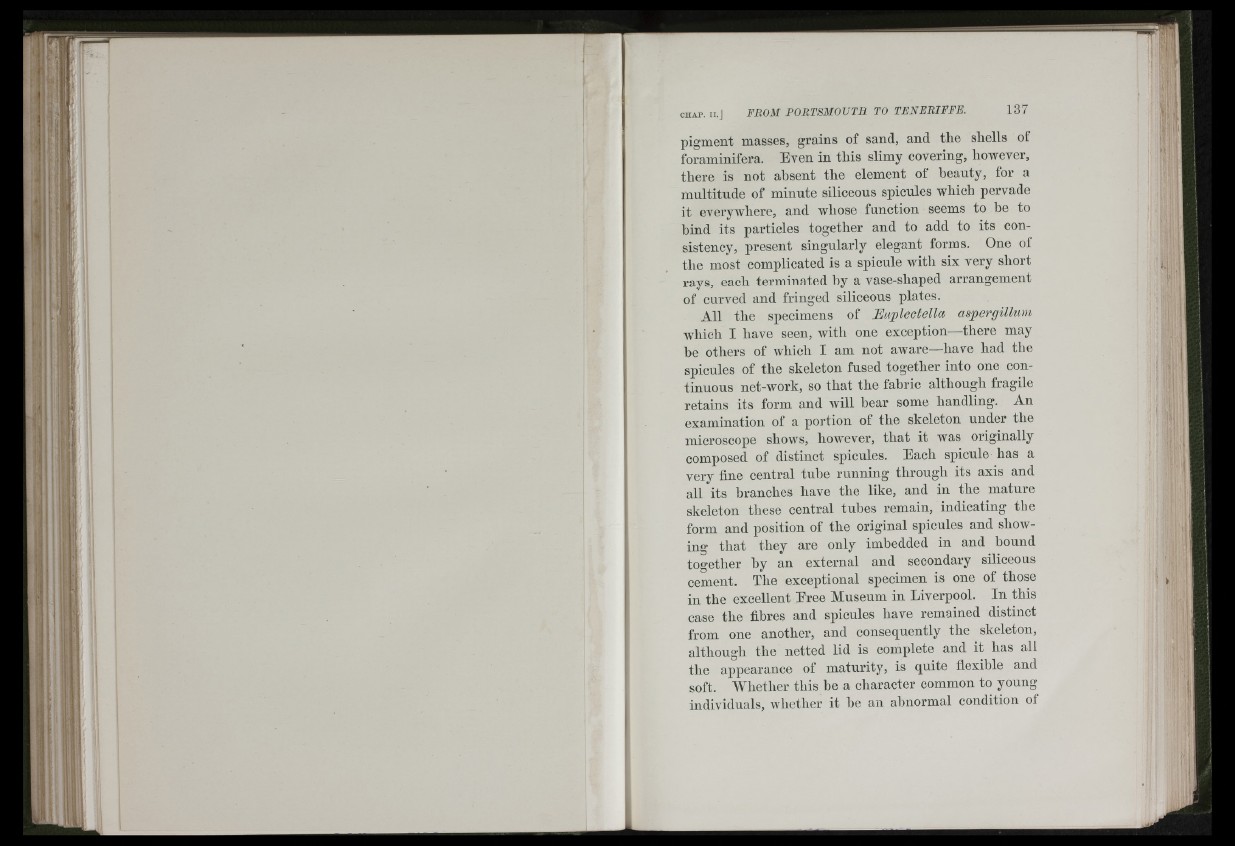
s
CHAP. II .J FROM PORTSMOUTH TO TENERIFFE. 137
pigment masses, grains of sand, and the shells of
foraminifera. Even in this slimy covering, however,
there is not absent the element of beauty, for a
multitude of minute siliceous spicules which pervade
it everyAvhere, and whose function seems to be to
hind its particles together and to add to its consistency,
present singularly elegant forms. One of
the most complicated is a spicule with six very short
rays, each terminated hy a vase-shaped arrangement
of curved and fringed siliceous plates.
All the specimens of Euplectella aspergillum
which I have seen, with one exception—there may
be others of which I am not aware—have had the
spicules of the skeleton fused together into one continuous
net-work, so that the fabric although fragile
retains its form and Avill hear some handling. An
examination of a portion of the skeleton under the
microscope shows, hoAA'ever, that it was originally
composed of distinct spicules. Each spicule has a
very tine central tuhe running through its axis and
all its branches have the like, and in the mature
skeleton these central tubes remain, indicating the
form and position of the original spicules and showing
that they are only imbedded in and hound
together hy an external and secondary siliceous
cement. The exceptional specimen is one of those
in the excellent Eree Museum in Liverpool. In this
case the fibres and spicules have remained distinct
from one another, and consequently the skeleton,
although the netted lid is complete and it has all
the appearance of maturity, is quite flexible and
soft. Whether tbis be a character common to young
individuals, Avliether it be an abnormal condition of